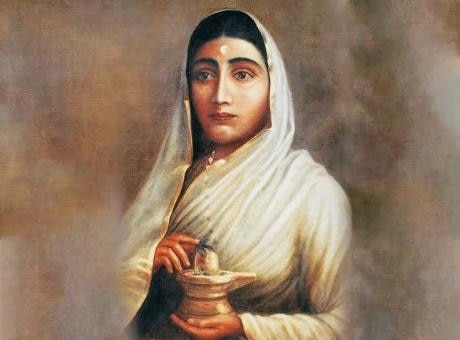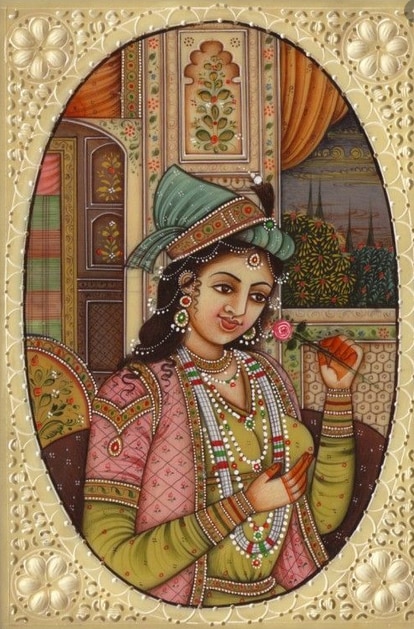keyword: warrior, East India company, British
The greatest female warrior of all time
India has an extremely great and illustrious history. The heroine of India and her past, however, had an even greater impact. Every time there were significant attacks in India, women changed history by establishing their equality with males. Women made a significant contribution to India’s independence as well. In Dwapar Yuga and Treta Yuga, women were also referred to as Veer. While figures like Shivaji Maharaj, Bajirao, Maharana Pratap, Rana Sanga, Prithviraj Chauhan, and others have received recognition that is due them, the unsung women warriors have long been denied it.
Few of the greatest warrior of all time are:
Rani Lakshmi Bai

Manikarnika, affectionately known as “Manu,” was the child of a Varanasi Brahmin priest. After she wed Maharaja Gangadhar Rao of Jhansi in 1842, she was given the new name Lakshmibai. Due to Lord Dalhousie’s Doctrine of Lapse, her husband’s death in 1853 led to the British annexing her kingdom, Jhansi. Additionally, the British refused to acknowledge Damodar Rao, her adopted son, as the legitimate heir to the throne. Lakshmibai was relegated to the Rani Mahal and given a pension after being ejected from the Jhansi fort. She made a number of unsuccessful pleas to England on the annexation strategy.
In 1857, when nearby princes attacked her, she bravely fought back while holding a sword in one hand and a child strapped on her back. When the British army invaded Jhansi in 1858, Laxmibai and her son fled to Kalpi where they joined Tatya Tope. They took Gwalior, but the Britishers regained control. She participated in the Kotah-ki-Serai combat in 1858 while wearing a man’s costume, but she was fatally shot.
A popular quote that captures Rani Lakshmi Bai’s spirit of valour is:
“बुंदेले हरबोलों के मुँह हमने सुनी कहानी थी,
खूब लड़ी मर्दानी वह तो झाँसी वाली रानी थी”
The Rani Durgavati:

The monarch of Gondwana, Rani Durgavati, was a fierce fighter with intelligence, wit, and valour. After her husband’s passing, she assumed the throne in her son’s name. She wouldn’t budge and showed up on the battlefield to defend her realm when the Mughal General Khwaja Abdul Majid Asaf Khan invaded it with his vast force. Despite suffering severe wounds, she fought valiantly, saying that she would rather commit suicide than give up to the enemy. Her death anniversary is commemorated as “Balidan Diwas” in recognition of her bravery.
Begum-Hazrat-Mahal:

Begum Hazrat Mahal declared war against the British East India Company as part of the Revolt of 1857, often known as the first war of Independence. She overran Lucknow with the aid of Raja Jailal Singh, installing her 14-year-old son Prince Birjis Qadr as the king of Oudh. But the British quickly retook control of Lucknow and the majority of Oudh, so his rule was short-lived. It was ordered for Begum to leave. Most Indian kingdoms turned her down for shelter, so she fled to Nepal, where she passed away in 1879.
Ahilyabai Holkar

Malhar Rao Holkar, a noble subedar of the Maratha kingdom, was replaced by Ahilyabai Holkar as king. When Khanderao Holkar was killed in the Battle of Kumher, Malhar Rao Holkar held Ahilya Bai in the highest regard and even stopped her from practising Sati.
After the passing of her father-in-law, Ahilyabai took the throne. She was skilled in military combat, and she even took command of the Malwa army during a fight.
This Indian queen was among the most capable female monarchs, and she is still credited with helping Indore grow from a village to a city. But the building of the Kashi Vishwanath Temple, which Emperor Aurangzeb had destroyed, is regarded as her greatest achievement.
Razia Sultan

Razia Sultan, the only woman to lead the Delhi sultanate, was born to Sultan Shamsuddin Iltutmish. To the dismay of his nobles, who could not accept a female ruler, Sultan Iltumish chose Razia as the heir apparent following the death of her eldest brother and the previous heir apparent Nasiruddin Mahmud. As the nobles installed her brother Ruknuddin Firuz as the new monarch in her place—a brutal and ineffective leader—Razia was forced to contend for the throne.
By organising and directing the populace into a rebellion, this Indian queen overthrew him and took the throne. She then imprisoned and beheaded Ruknuddin.
Even though Razia Sultan’s rule was brief, she showed herself to be a talented and strong leader.












